If you are ever in Picton, at the top of New Zealand’s South Island, take a two-minute walk along the foreshore from the Cook Strait Ferry terminal to Dunbar Wharf, and marvel at a unique survival: the Edwin Fox, last remaining wooden sailing ship to have carried India Pale Ale from London to the thirsty east.
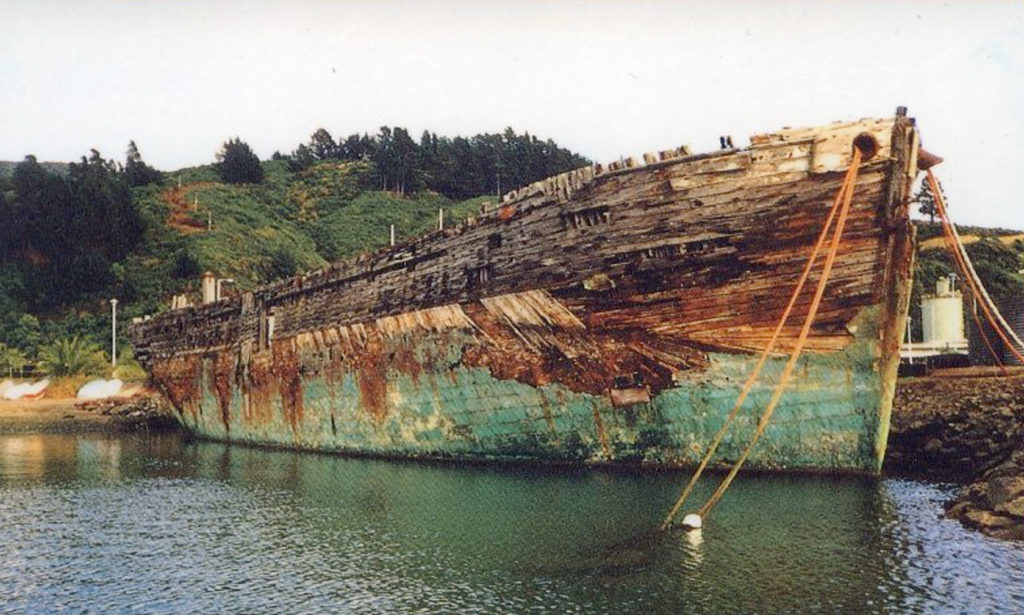
Admittedly, 166 years after she was built, from best Malabar teak and Morung saul in a shipyard on the Hooghly river, Calcutta, and more than a century after she was towed into Picton, minus her masts, you need to pump up your imagination to visualise what this now empty shell was like in its prime, crossing the briny blue oceans, stuffed to its gunwales with pale ale and porter brewed by the banks of the Thames.
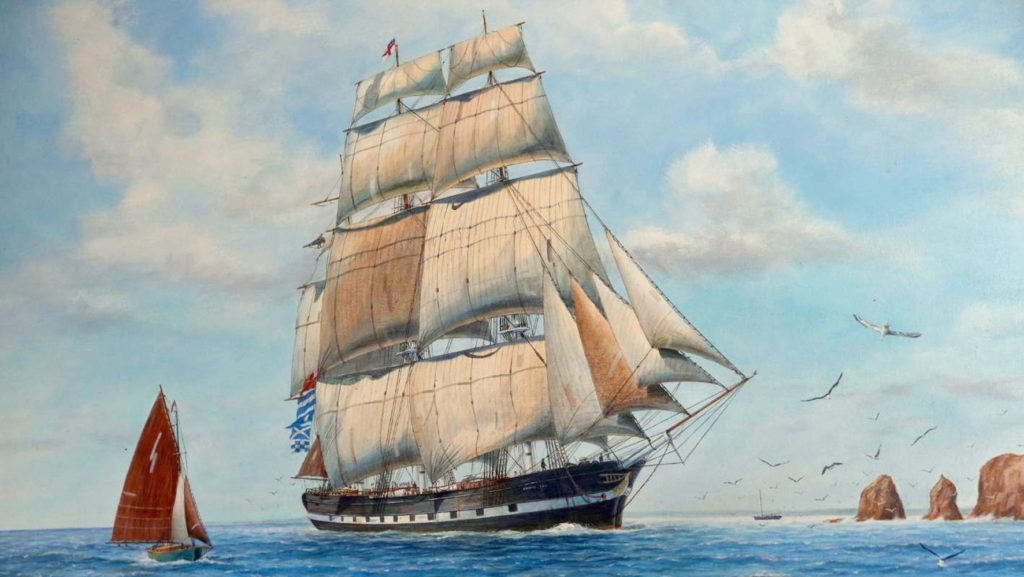
In her three decades as a working ship, the Edwin Fox carried an enormous variety of cargoes and passengers: troops to the Baltic during one of the side-campaigns of the Crimea War, supplies and ammunition to Balaclava, wounded soldiers back home, rice for Hong Kong and South Africa, coolies from China to the plantations of Cuba, coals to the Coromandel coast, convicts for Australia, cotton, sugar, more troops to and from India, emigrant families to New Zealand, as well as beer.
Her transport of IPA from London to India, according to modern commentators who prefer the thrill of a good story to the labour of checking its veracity, brought the Edwin Fox the nickname “the booze barge”. Unfortunately (a) there appears to be no 19th century evidence to support this claim; (b) the nickname “booze barge” has also been given by writers to another 19th century vessel, the clipper Catherine Adamson, from Aberdeen, which was wrecked during a storm in Sydney Harbour in 1857 and went down with a cargo of 4,000 gallons of brandy, 5,000 gallons of wine, 1,500 gallons of other spirits and 156 barrels of beer; and (c) the term “booze barge” first seems to appear in print only in 1908, in the United States. It has to be doubted, therefore, that the Edwin Fox was ever called a “booze barge” by her contemporaries.
Indeed, only six journeys with beer as cargo are definitely known for the Edwin Fox, three of which were to New Zealand. One of those beer trips to India, in 1869, was one of the many near-disasters that the Edwin Fox regularly became fouled in during her career. The vessel, by now technically a barque, that is, with fore-and-aft sails on the mizzen mast (the rear-most one of three) rather than the square-rigged sails on all three masts of a ship, a cost-saving alteration that had been made two years before, had left London for Madras on March 17 with a cargo made up mostly of 1,700 hogsheads – 85,000 gallons – of ale and porter, probably all made at the Taylor Walker brewery in Limehouse and ordered by the Madras government for the canteens of British regiments based in India. She arrived on July 25, after 137 days, in the Madras Roads, having travelled round Africa and via Trincomalee in Ceylon, a voyage of 14,000 miles. Some 317 hogsheads of beer were unloaded in Madras, and the Edwin Fox left on the afternoon of August 10 for the port of Masulipatam, 220 miles up the coast, with the rest of the beer, around 1,400 hogsheads.
A day and a half out of Madras, in the middle of the night, with her captain, William Black, literally in unfamiliar waters and feeling his way along, the Edwin Fox grounded in the soft mud of a shoal bank, 2½ miles from the shore. She stuck there for a day, as Black and the crew tried to get her to move, until finally it was decided the only way the Edwin Fox was going to shift would be to lighten her by throwing some of the cargo overboard. Normally it would be ballast or shot tossed into the sea to lighten a stranded vessel, but Black was afraid that might form a wall around the Edwin Fox which would stop her floating off. A total of 446 hogsheads, all those stowed in the tween decks, went over the sides, not far short of 200,000 pints of beer, a task that took the 22 crew members (not including the captain) 2½ days, before the barque finally floated free of the underwater mud early the following morning and they were able to continue on to Masulipatam, arriving a few hours later with the Edwin Fox apparently unharmed.
By November 1869 200 hogsheads of ale and one of porter had been salvaged in good condition from the 446 thrown overboard, along with 11 hogsheads where the contents had turned bad, and six empty casks. But that still meant a sixth of the total cargo of ale had been lost. Captain Black faced an official marine court of inquiry into the ship’s grounding, which concluded that though he “acted unwisely” in sailing so close to the shore when he had never been in those waters before, it would restrict itself to “strongly cautioning him to be more careful” in future.
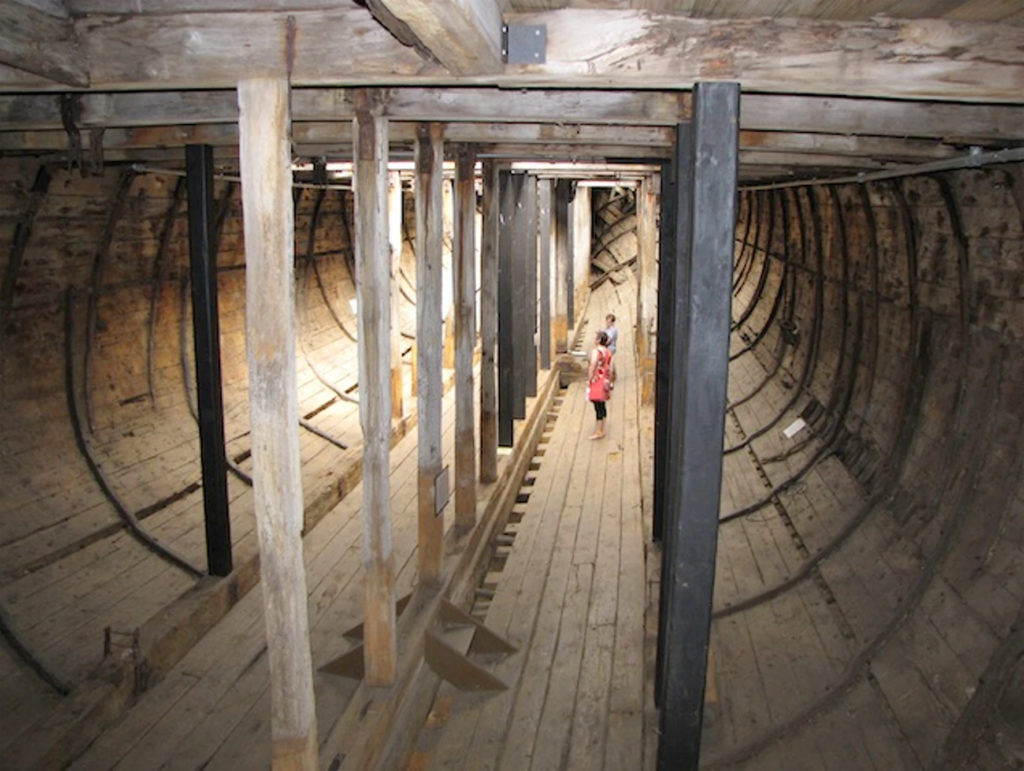
The Edwin Fox had been built in 1853 in the shipyard at Sulkeah in Calcutta owned by Thomas Reeves, son of a shipbuilder from London. She has been described as “the last of the East Indiamen”, the name given to the iconic vessels owned and run by the Honourable East India Company, but as a ship she was considerably smaller than the classic East Indiaman, more cramped and less stylish. She probably took only a few weeks to build. The Edwin Fox for whom she was named was a friend of Reeves, described in Reeves’s will as a City of London merchant, though there are at least two candidates as to who exactly he was. One Edwin Fox was a London-born auctioneer and businessman who died at his home, Heatham House, Twickenham, in 1891. The other Edwin Fox, sometimes described as “the well-known Southampton Quaker” (though he was not from Southampton), was a senior figure in the East India Company, who was born in Wadebridge, Cornwall and died on the Isle of Wight in 1892.
This Edwin Fox, with his Indian connections, seems the most likely man for whom the ship was named: though recently a third Edwin Fox, supposedly a shipwright in Reeves’s shipyard at Sulkeah, was suggested as the ship’s eponym. That the original Edwin Fox was a businessman rather than a shipwright, however, is strongly suggested by a story told about a deputation by a new crew complaining of a ghost in the fore ’tween deck space. The ghost – a huge white figure wearing a top hat – turned out to be the ship’s figurehead, Edwin Fox himself, damaged and placed below deck to await repair and replacement at the front of the ship.
The Edwin Fox was signed off by Reeves’s master shipbuilder, William Henry Forster, on December 6 1853, with Reeves listed as the sole owner, and she cleared customs at Calcutta just eight days later for a voyage to London via the Cape of Good Hope, carrying ten passengers and a mixed cargo that included almost 4,000 bags of rice, 145 bales of goatskins and cow hides, 750 bales of jute, 225 cases of castor oil, 3,400 bags of linseed and rape seed and around 100 tons of saltpetre. She unloaded the rice in Table Bay on February 20 1854, and was waiting to take on fresh water before continuing her journey when a gale arrived. The ship’s anchor cables parted during the storm, she hit another vessel – the first of many collisions during her career – and lost her foremast and part of her mainmast, with considerable other damage. Repairs took a fortnight, but the Edwin Fox finally left Table Bay on March 7, arriving off Gravesend in the Thames estuary on May 10, after a five-month journey from India.
A month later Reeves sold the Edwin Fox to Sir George Edmund Hodgkinson, a City of London-based shipowner. Hodgkinson immediately hired her out to the British government for use as a transport in the Crimean War, which had started the previous October. The Edwin Fox was actually in the Black Sea, transporting sick and wounded troops from the front (at one point she was visited by Florence Nightingale herself), when she was sold again, in May 1855, to another London ship owner, Duncan Dunbar.

Much mythology has sprouted around Dunbar, and his father, Duncan Dunbar senior. Their business was based at what was known as early as 1804 as Dunbar Wharf, in Fore Street (today Narrow Street), Limehouse, described in 1803 as “a large warehouse adjoining to the water, with a commodious landing place for merchandise”. In particular it is frequently stated that Dunbar senior ran a brewery. There is no evidence at all to support this claim, however. Instead Duncan Dunbar senior was merely a beer, wine and spirits merchant, exporting to India and other overseas markets beers sold in his own name – not unknown among merchants and beer bottlers, with, for example, the Mincing Lane, City of London-based firm Shone & Co shipping porter under its own name to Calcutta in 1797 – but almost certainly actually brewed by Taylor’s brewery (later Taylor Walker) a short distance away from Dunbar Wharf in Fore Street. In 1801, for example, porter and brown stout “from Hodgson and Co [the famous pale ale brewers of Bow] and Duncan Dunbar, at 90 Rs per Hogsheads” was on sale in Calcutta. The following year “Duncan Dunbar’s ale, in bottles” was on offer to the Bengal city’s drinkers. By 1821 “Dunbar beer in hogsheads (brown stout)” was available in Sydney, Australia.
With its near-neighbour Taylor’s one of the biggest London porter brewers, and also producing pale ale, it would certainly make little economic sense for Dunbar to brew his own. Nor did he export only ale, porter and stout: in 1803 “Whyskey [sic] from Duncan Dunbar” was on sale in Calcutta. In an Old Bailey court case of 1804 involving stolen bottles, Dunbar is specifically described as a wine and spirit seller. Trade directories regularly call him a “beer merchant” or “ale and porter merchant”. He was called a “porter-merchant” in 1808, when the “substantial warehouse with large cellars and vaults on the basement” he was leasing in Fore Street was advertised for sale. Nowhere is he mentioned as a brewer of his own beers. Instead the cellars and vaults at Dunbar Wharf served as stores for beer brewed by others, most of it, according to one source, by Taylor Walker up the street, but with a label on the bottles carrying the Dunbar house flag, showing a golden lion on a red shield with a white border decorated with red and gold diamonds and stars. “Envious rivals,” it has been declared, “said that the Dunbar fortunes floated to success on Taylor Walker’s ale.”

Duncan Dunbar senior, born around 1761, was the seventh son of John Dunbar, a tenant farmer of Balnageith, near Forres, in the north of Scotland. He had moved to London by the 1790s, opening a beer, wines and spirits business, marrying and fathering two sons and six daughters. The eldest son, Duncan junior, was born in 1803, joined the family business aged 16 after two years at Aberdeen University, and was made a partner aged 21 in 1824. A year later Duncan senior died at his home in the East India Road, Poplar, aged 64, leaving Duncan junior in charge of the firm. From 1827 Duncan junior began to branch out into ship-owning, starting with a half-share of a barque built in Sussex. In 1841 Duncan Dunbar and Sons were still being described in Australia as “wine and porter merchants”. But by 1842 the Dunbar fleet numbered 11. From that year, growth accelerated, so that by the beginning of 1858 Dunbar owned 43 ships, the biggest privately owned fleet in the world.

The acquisition of the Edwin Fox by Dunbar has another myth attached. Supposedly the ship was put up for auction by Hodgkinson, and the auction attracted both Dunbar and a pair of rival shipowners, John Willis, who later owned the Cutty Sark, and James Baines of Liverpool, owner of the Black Ball shipping line:
“The auction was charged with electricity in the form of rivalry … The bidding commenced at £15,000 and went up quickly to £25,000. Willis withdrew at £25,000, knowing there was heat in the bidding of a personal nature, and immediately Baines who was decked out very smartly for the day, bid £28,000 and turned and snarled at Dunbar: ‘Beat that if you can, and be damned to you!’ Applause broke out, and Dunbar shouted back: ‘£30,000, and the same to you!’ Gasps of astonishment arose, there was silence, and the record price was paid by Dunbar. Dunbar made back the purchase price plus £8,000 profit in the next 18 months of charter for French troops to the Crimea. A very good investment indeed.”
Unfortunately the story, while a cracker, does not add up, it does not fit the known facts, and nor can it be found in any journals from the time. Ships like the Edwin Fox were being sold for less than £15,000, so it seems hugely unlikely that Dunbar would pay twice that for her. In addition, there is no evidence that Dunbar ever chartered her to carry French troops. She arrived home off Plymouth from the Black Sea carrying almost 150 invalids from 51 different British regiments in October 1855, five months after her purchase by Dunbar. Over the next four months the Edwin Fox was refitted to carry passengers and general cargo, and in February 1856 she left London for Melbourne with six paying civilians and a hold full of miscellaneous goods.

The next four years were spent travelling around the Far East looking for cargoes, or transporting convicts from Britain to Australia. The first occasion the Edwin Fox carried beer to India appears to come in February 1860, when she left London for Bombay with a cargo that included “a substantial quantity” of Taylor Walker’s India Pale Ale. Her owner, Duncan Dunbar junior, a heavily built man described as looking like John Bull, died unmarried two years later, in March 1862, aged 59. He left a fortune estimated at £1.6 million, perhaps £150 million today, which went to his sisters and nieces. He was buried in Highgate Cemetery, and the ships in the East India Docks flew their colours at half-mast on the day of his funeral.
When the Edwin Fox made her next known journey to India with beer in her hold, in October 1863, she had a new owner, the firm of Gellatly, Hankey and Sewell, founded by Dunbar’s former manager, Edward Gellatly, who had bought the vessel at one of a series of auctions of Dunbar’s stocks and holdings in July 1862 for £7,600. (The stocks at the warehouse in Limehouse included, as a small selection, 12,000 new oak staves, 39 tons of new iron hooping, 336 barrels of pork, three pipes of lime juice, 275 gallons of brandy, rum and gin, and 300 dozen of bottled beer.)
Under her new owners, who converted her to a barque, which took a smaller crew to control and thus made her cheaper to operate, the Edwin Fox mostly carried troops to and from British India for the next few years, with the exception of the ill-fated “booze cruise” of 1869, and a trip from Cardiff to Madras with 1,000 tons of coal briquettes. In the early 1870s the Edwin Fox turned from carrying goods, or soldiers, to taking emigrants out to start new lives in New Zealand. On her first journey in this new role, with some 200 emigrant passengers, the Edwin Fox was caught in a tremendous storm in the Bay of Biscay in February 1873 that left her badly damaged and needing to be towed into Brest by a passing steamship, with the ship’s doctor and a crew member both killed and others injured.
Later reports claimed that as the waves and wind battered the Edwin Fox, crew members stuck into the brandy that was part of her stores and became too drunk to do their jobs, so that the single men among the passengers had to step up. One overheated version said the crew was arrested and sent back to Britain in irons, where they received six months’ hard labour. There is, however, no evidence for these claims. It took a month in the shipyards of Brest to get the Edwin Fox seaworthy enough to continue her voyage, and she finally reached New Zealand in June 1873 – straight into quarantine, since she arrived with several passengers suffering from fever. Local drinkers would have been relieved when the barque was finally able to unload: her cargo included 133 dozen of beer, as well as 3,000 sacks of salt, four dozen pairs of boots and other goods which had survived the Biscay storm almost undamaged.
Another voyage to New Zealand carrying 265 emigrants that began in late 1874 was almost as traumatic, with two false starts and a collision that resulted in the sinking of a schooner. During this voyage the Edwin Fox was sold to the charter firm Shaw Savill. She was hired for a third time in 1878 to carry 249 emigrants to New Zealand, her cargo on the journey to Nelson in the South Island including 250 cases of stout, as well as 800 cases of gin, 55 cases of brandy, 300 cases of whisky, 480 bags of salt, 35 cases of sardines, 20 tons of pig iron and other goods. The last emigrant haul came in 1880, when the Edwin Fox took out just 99 passengers for Lyttelton, on South Island. Again the cargo included beer – 333 “pkgs”, presumably cases of bottles – along with 1,365 “pkgs” of spirits, a case of toys, four cases of scientific instruments, ten drums of oil and 410 casks of cement, plus other items.
For the next five years the Edwin Fox tramped the globe, from San Francisco to Norway to Sydney, carrying everything from coal to grain to timber. But more than 30 years after she was built, the barque was now close to obsolete. Meanwhile advances in freezing technology meant New Zealand was now able to export its lamb to Britain without the meat spoiling, and there was a need for extra meat freezing capacity. When she arrived back in London in 1885, the Edwin Fox was converted into a freezer ship, with a refrigeration plant on board, and sent out to New Zealand for the last time, where she would be expected to freeze 600 to 700 carcases a day, and store a total of 15,000 frozen sheep for eventual transfer to steamships that would take them to markets abroad.
The Edwin Fox spent 15 years as a freezer hulk, in six different locations, finishing up at Picton in 1897. After three years freezing mutton there, in 1900 the refrigeration plant was removed and she was converted to a coal hulk, in effect a floating wooden coal bunker. That was her role for half a century, but in 1953 her owners ended her British registration and she was left derelict.
The idea of restoring the Edwin Fox was first raised in 1964, and in 1965 the newly formed Edwin Fox Restoration Society bought the hulk from the New Zealand Refrigeration Company for one shilling. It was 21 years, however, before the project finally began to pick up speed. In 1986, after nearly 400 tonnes of shingle ballast were removed from her hull, the Edwin Fox was floated to the spot on the Picton shorefront that was to be, eventually, her permanent home. A visitors’ centre was opened in 1990. But with full restoration now estimated at NZ$12 million, an impossible sum to raise, it was decided that the best future for the Edwin Fox was the preservation of her hull in a purpose-built dry dock. The dock was built, and the ship placed in it in 1999, and eventually a roof was placed over the dock. Today she is one of New Zealand’s most popular historic tourist attractions.
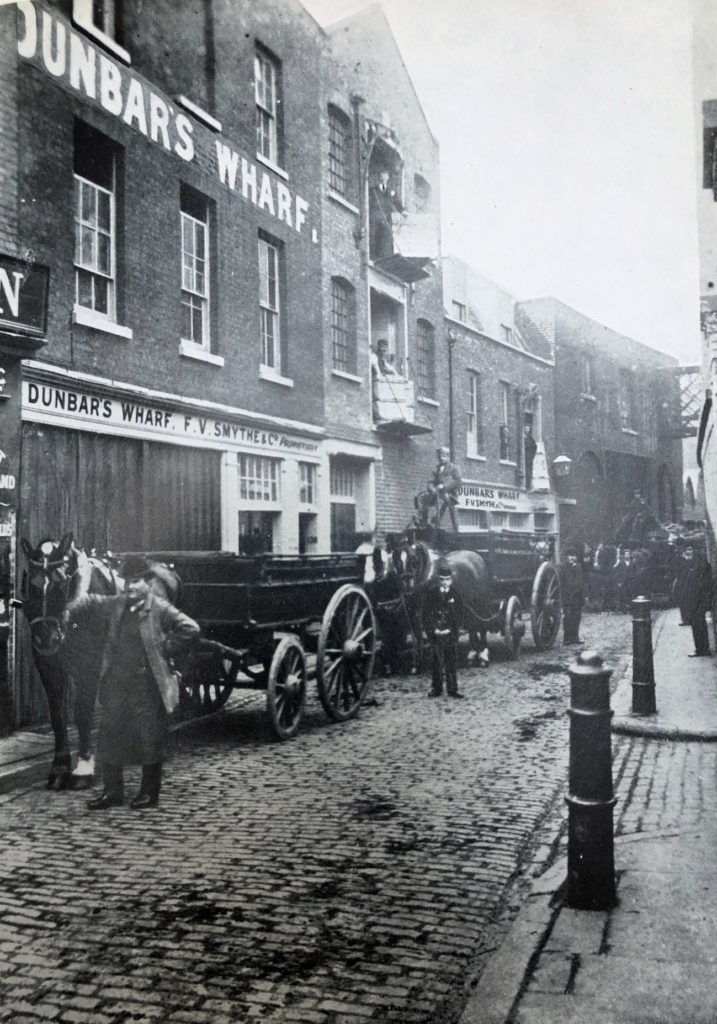
For a long time the Edwin Fox had a rival as the last of the wooden IPA ships, in the Jhelum, built of English oak, ironwood and mahogany at the shipbuilder and ship owner Joseph Steel & Son’s shipyard in Baffin Street, Liverpool in May 1849. The ship’s name comes from the river Jhelum in the Punjab (today in Pakistan), which was in the news early in 1849 as the scene of a vicious battle between the British (more strictly the East India Company) and the Sikh Empire during the Second Anglo-Sikh War. (It is a little ironic that the India-built Edwin Fox has an English name, while the English-built Jhelum had a name from the Indian sub-continent.)
The Jhelum left Liverpool on July 13 1849, less than two months after she was launched, sailing for Bombay, and arriving on November 16 1849, with a mixed “general” cargo. Sailing ships from Liverpool certainly did carry IPA to India: the Crusader, an East Indiaman, had in her hold beer from Bass and Allsopp of Burton upon Trent being shipped to Bombay when she went aground on a sandbank off the coast of Blackpool in the great storm of 1839 and scattered her cargo along the coast of Lancashire. Whether the Jhelum‘s cargo included beer is not known: the Liverpool Customs Bills of Entry record the daily imports and exports, but not what was in the holds of each vessel, only the port of destination. With, for example, six ships loading for Bombay (out of perhaps 260 in the docks), that makes it impossible to say which ship was carrying what. The Jhelum began loading cargo on Friday June 1 1849, and though beer was certainly going to other destinations from Liverpool at that time – the records show four hogsheads and six barrels listed for Sydney, and 27 barrels of bottled ale for Calcutta while the Jhelum was being loaded – the Bills of Entry between June 1 and the day she was cleared outwards, July 12, do not appear to show any beer being loaded for any ships going to Bombay, out of a huge variety of goods passing through Liverpool docks destined for the Indian city, including muskets, bugles, coal, soap, hams, cotton goods and sheet iron. The Jhelum‘s log, which may show her cargo on that first voyage, is currently in the maritime history archive of Memorial University in St John’s, Newfoundland, and it has not been possible to consult it.
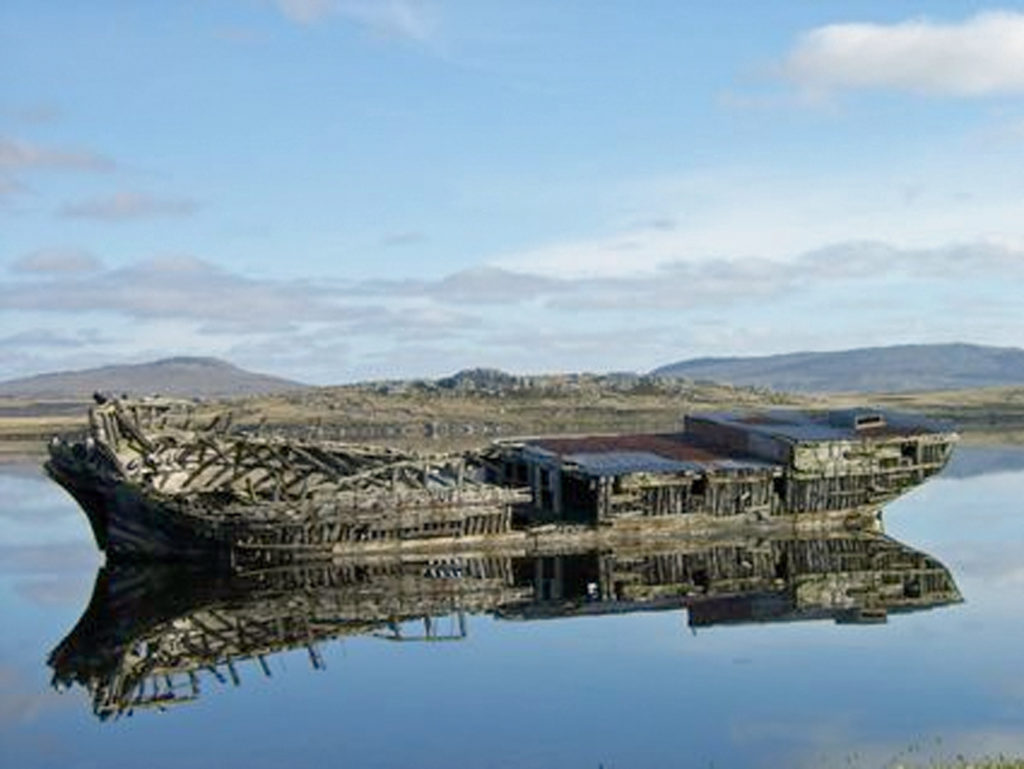
Her maiden voyage was, in fact, the only time the Jhelum ever sailed to the east, and thus the answer to the question “did she carry IPA to India?” has to be “probably not.” The rest of her career was spent voyaging to South America, often carrying coal from Cardiff to places such as Montevideo, in Uruguay, and then sailing on round Cape Horn to pick up cargoes of guano from islands off the coast of Peru, bringing them back to Europe for use as fertiliser. It was a rough, tough, battering life, and in July 1870, just 21 years after she was built, and after only 19 round-trips of up to 24,000 miles at a time, the Jhelum staggered in to Port Stanley in the Falklands, having travelled through heavy gales from the Guañape Islands of Peru laden with 500 tons or so of guano. The ship was leaking badly, and the crew refused to sail any further in her. A series of inspections condemned her as unseaworthy, and she was left abandoned in Port Stanley harbour.
Almost miraculously, the Jhelum, or at least its hull, survived intact for the next 120 years. In the 1980s the Mersey Maritime Museum, which was interested in the ship as a rare survivor of Liverpool’s 19th century shipping history, send out a team to give the vessel some emergency first-aid to prevent it collapsing totally, while discussions went on about a possible restoration. The cost, however, was far too great, and the Jhelum continued to lie by the beach, gently rotting. Her bow collapsed after a storm in October 2008, and her stern went the same way not quite five years later, in August 2013. If the Edwin Fox ever had a rival as the last of the wooden IPA transports, it does no longer.
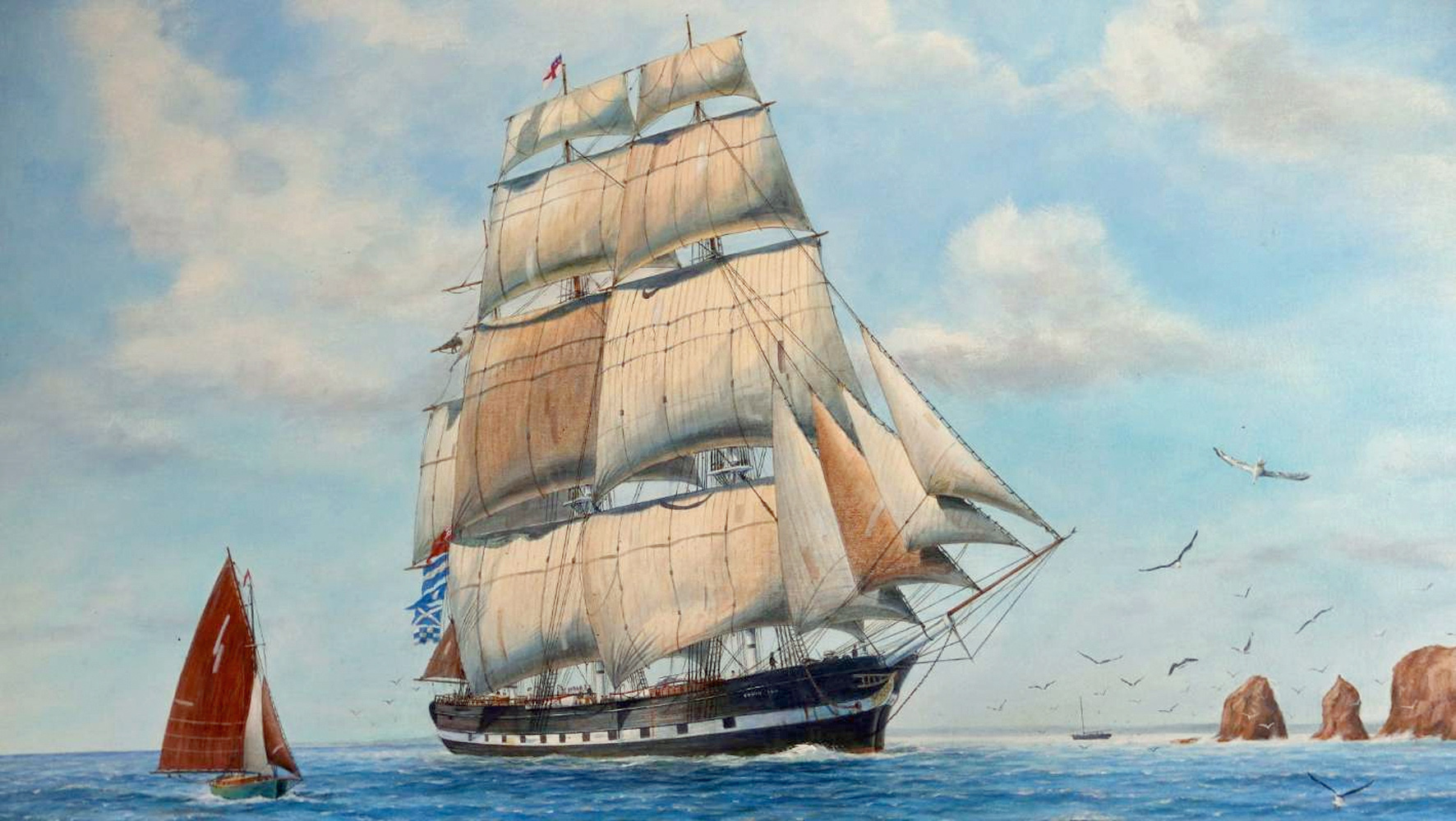

[…] Martyn Cornell has found something amazing: “the Edwin Fox, last remaining wooden sailing ship to have carried India Pale Ale from London to the thirsty east”. You can read the full story at Zythophile: […]